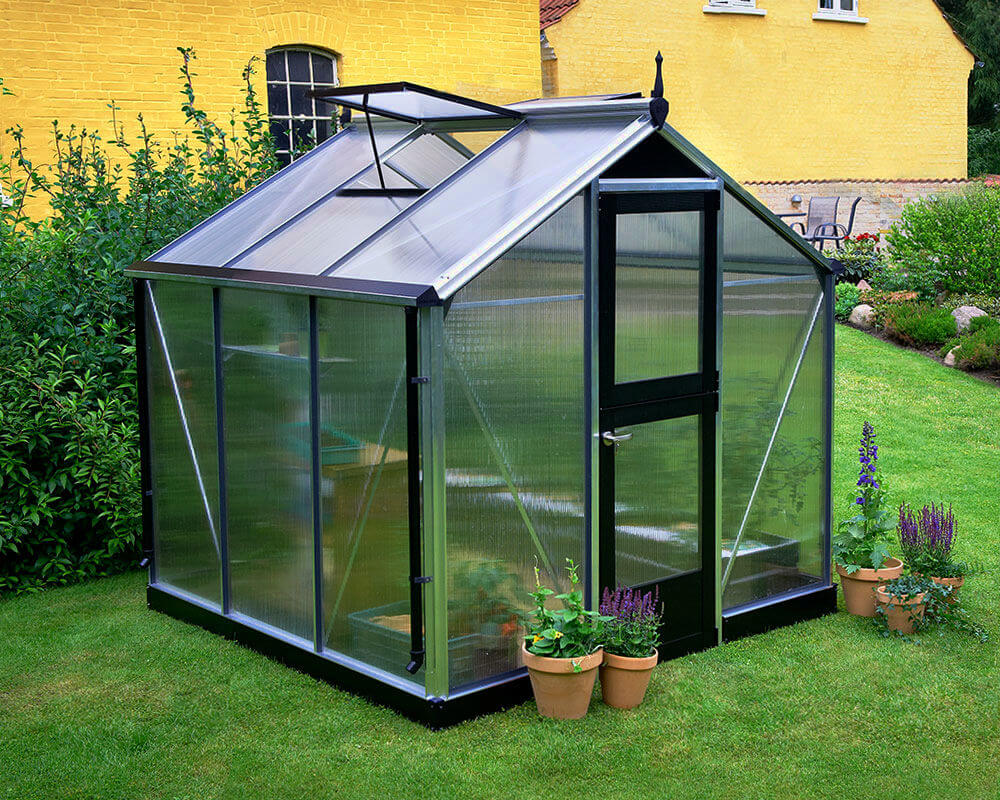From Guest Blogger Emily Folk: Seven Ways to Go Green in Your Home

small greenhouses for sale
We might recycle and use LED lightbulbs, but for most of us our homes are not as eco-friendly as they could be. Homes, especially older homes, weren’t designed with green construction in mind. What can you can go green in your home? Here are seven tips and tricks that we’ve come to love and use in our own homes.
1. Energy Tracking
You can track your energy usage by paying close attention to your energy bill or even doing the math by looking at the numbers on your power meter, but while that tells you how much power your home is drawing it doesn’t tell you which appliances or which rooms are using the most energy. Smart power strips, when paired with their respective apps, can keep track of your worst energy drains so you can start to reduce your home’s power usage by turning off or unplugging these appliances.
2. Go Solar
Installing solar panels on your home can be a great way to offset your energy costs — even if the initial cost of the panel installation can be fairly high. It can cost between $15,000 and $30,000 for an average sized system, but many companies offer leasing or renting options where you can have a full set of panels installed and just pay a monthly fee. Check Google Sunroof or other similar tools to see if your home gets enough sun to justify installing a set of solar panels or Tesla solar shingles.
3. Go Green — Literally
Adding some greenery to your home can help make it eco-friendlier and even healthier for the people that live there. Plants like aloe, spider plant, snake plants and ferns don’t just look pretty — they remove chemicals like benzene, ammonia, and formaldehyde from the air that you breathe. Others produce extra oxygen, making them the perfect addition to your bedroom. These plants work best when you have one houseplant every 100 square feet, so take a trip to your local nursery and start greening your home!
4. Install a Smart Thermostat
We all try to be smart with our thermostat settings, but no one likes coming home to a warm or cold house, depending on the season. Smart thermostats allow you to control your home’s temperature remotely, or program it to change your home’s temperature depending on the season or the time of day. Keeping your HVAC system running is one of the biggest energy expenditures in your home, so a smart thermostat can help you keep it a little bit cooler.
5. Go Tankless
Traditional water heaters use heating elements to keep a large tank of water at a pre-set temperature. This also means that they’re sucking up energy every time the water in the tank drops below a certain temperature. By upgrading to a tankless water heater, you eliminate this energy drain entirely. The only time a tankless heater draws power is when you’re actively using your hot water and it only heats what you need when you need it.
6. Stop Up Leaks
Air conditioning is great, but only if the cool air stays in your home. Old doors or windows might not seal as well as they used to, meaning all your cool air is leaking out. Take the time to seal up any leaks with caulk or weather stripping to ensure that you’re not trying to air condition the entire neighborhood.
7. Water Health Matters
Water is essential to all life and to our health. Installing low-flow showerheads, toilets and faucets as well as having Energy Star rated appliances can go a long way toward decreasing your water usage and helping the planet. Another factor is water quality. From a survey of 1200 adults, 56 percent said they were “concerned” or “very concerned” about the water quality of their home. Chemical runoff from farming and pollution in our water has led to overall decreased water quality. Using water filtration systems can decrease this concern and help you and your family feel healthier.
It doesn’t take much to reduce your home’s environmental impact, even if some of the options that we’ve listed are a little more expensive. Just swapping out your water heater or adding some greenery to your home can make a world of difference.
